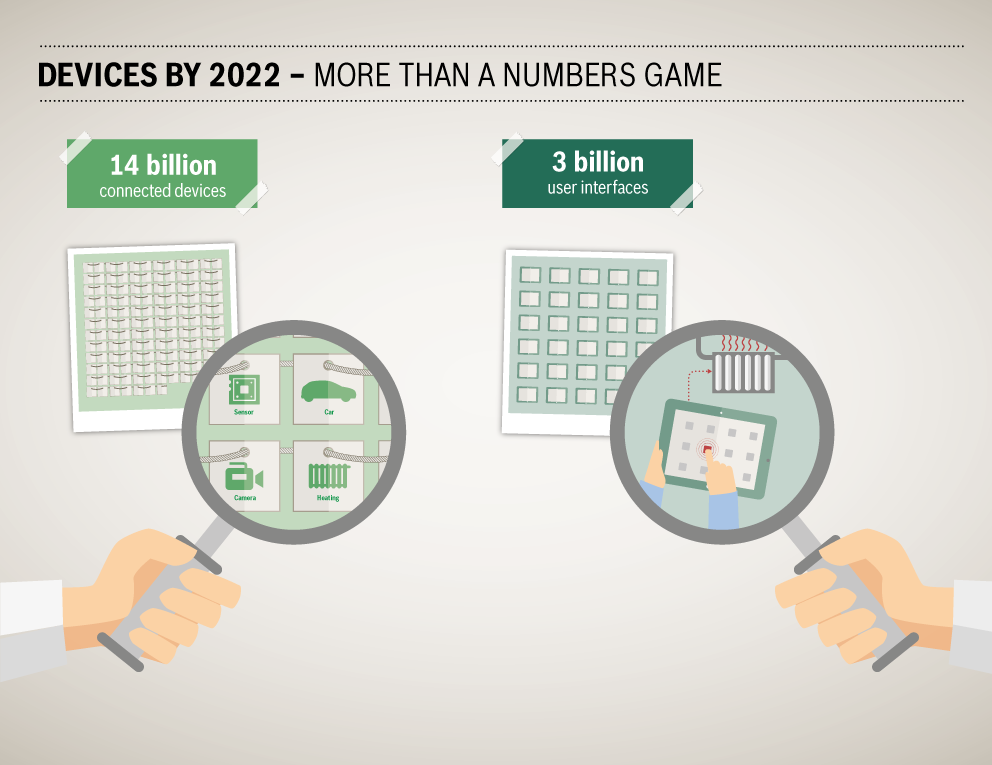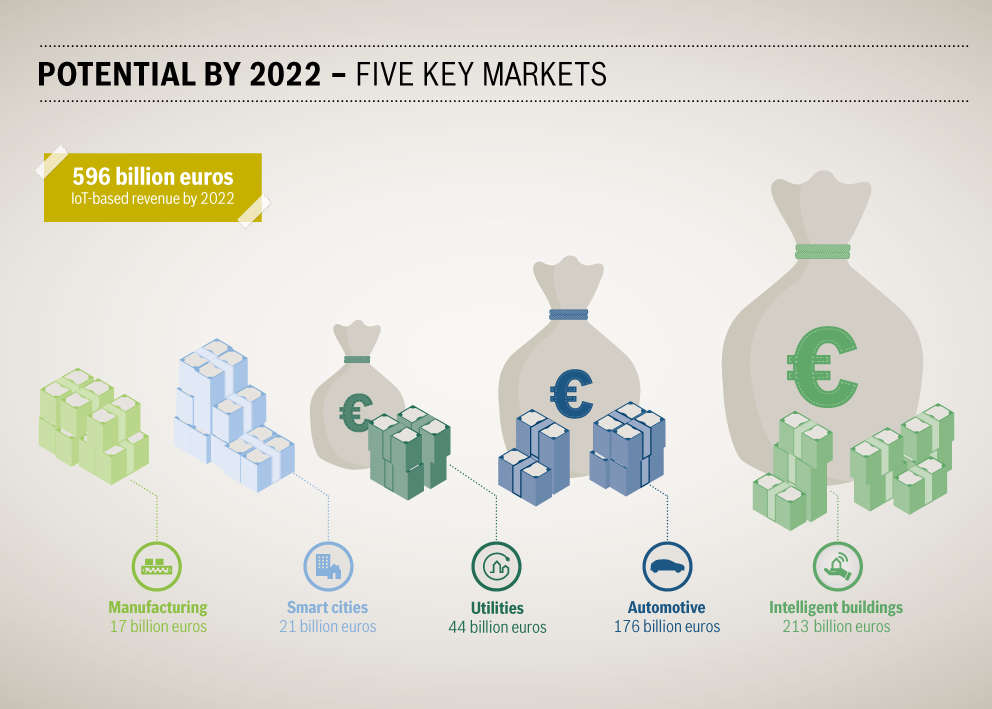When we started our initial research back in 2012, it was quite a challenge to find data on the number of connected devices out there. The market was uncertain not only about what a connected device is, but also whether smartphones, TVs, and tablets connected to the web also count as connected devices. Furthermore, the process of recasting M2M to better suit the IoT was still in its infancy (as was discussion of the difference between M2M-connected and IoT-connected devices). Given that there were so few central databases to refer to, we triangulated 15+ sources.
Connected devices by 2022
When we continued our research in 2014, however, it had become much easier to access data on connected devices, as analyst firms such as Machina Research are increasingly staying abreast of IoT developments. Based on their forecast database, we expect there to be approximately 14 billion connected devices* worldwide by the end of year 2022, from a starting point of more than 2 billion at the end of 2013. We anticipate that the majority of IoT connected devices in 2022 will be concentrated in four industries – intelligent buildings, automotive, healthcare, and utilities.
 ©Bosch.IO
©Bosch.IO
Numbers of connected devices and user interfaces by 2022
About connected devices
While in 2012/2013, many IoT players still considered smartphones and tablets to be connected devices, we now make a clearer distinction. Even though such devices are connected to the internet, we consider them to be interfaces that integrate the user into services of IoT-based business models, for example through apps or alerts.
If we left intelligent buildings out of the equation, the number of connected devices would be approximately 6 billion in 2022, starting from around 900 million at the end of 2013. However, since buildings comprise many independently connected devices, the smart building sector incorporates a relatively high number of connected devices.
That does not necessarily mean that the intelligent buildings sector is the automatic winner in the growing world of IoT opportunities.
The potential for increasing efficiency or developing new services or even new business models is not linked to the number of connected devices.
Connecting and managing a manufacturing machine or various parts of a power plant might provide greater opportunities than connecting a single refrigerator.
IoT revenue and applications
Another figure that should not be underestimated is the IoT’s revenue potential by 2022, which we consider to be around 596 billion euros spread across all players of the ecosystem.
But it’s not just the number of connected devices and revenues in specific industries that matters. It’s even more interesting to consider which applications will have the greatest importance.
A more detailed look at the utilities industry reveals that more than 90 percent of all connected devices will be related to smart metering applications. Electric vehicle charging and transmission & distribution will be of only minor importance in terms of the number of connected devices. But even application areas with comparably low numbers of connected devices might provide huge opportunities for developing new solutions and enjoying greater success in the marketplace. In smaller application areas, the number of competitors and competitive pressure will likely be lower, while the effect that efficiency or revenue have on new solutions is not necessarily linked to the number of connected devices.
 ©Bosch.IO
©Bosch.IO
Utilites, smart buildings, healthcare and automotive are the industries with the most connected devices in the IoT.
IoT in the automotive industry and manufacturing
The automotive industry presents a similar picture. 90 percent of all connected devices will be used in vehicle platform applications. Other applications – emergency call, entertainment, navigation, and security & tracking – will prove important for the development of new business models and increased efficiency in this industry. IoT evolution in the automotive industry has clearly begun; just consider connected fleets, car-to-go solutions, and on-board entertainment services.
The manufacturing sector and supply chain will require a relatively low number of connected devices compared to other industries. But the potential impact of device management and IoT solutions in this sector is relatively high. For example, predictive maintenance applications have shown high potential for reducing costs and increasing uptime and productivity. An evaluation of this sector shows that all application areas are equally important. It will be dominated by applications in the fields of processing, shipping and distribution, warehousing, and predictive maintenance.
 ©Bosch.IO
©Bosch.IO
IoT-based potential by 2022: 596 billion euros
Are you prepared for the age of connected devices? For a full IoT strategy background, including an IoT maturity model and tools for business model innovation, download our whitepaper.
